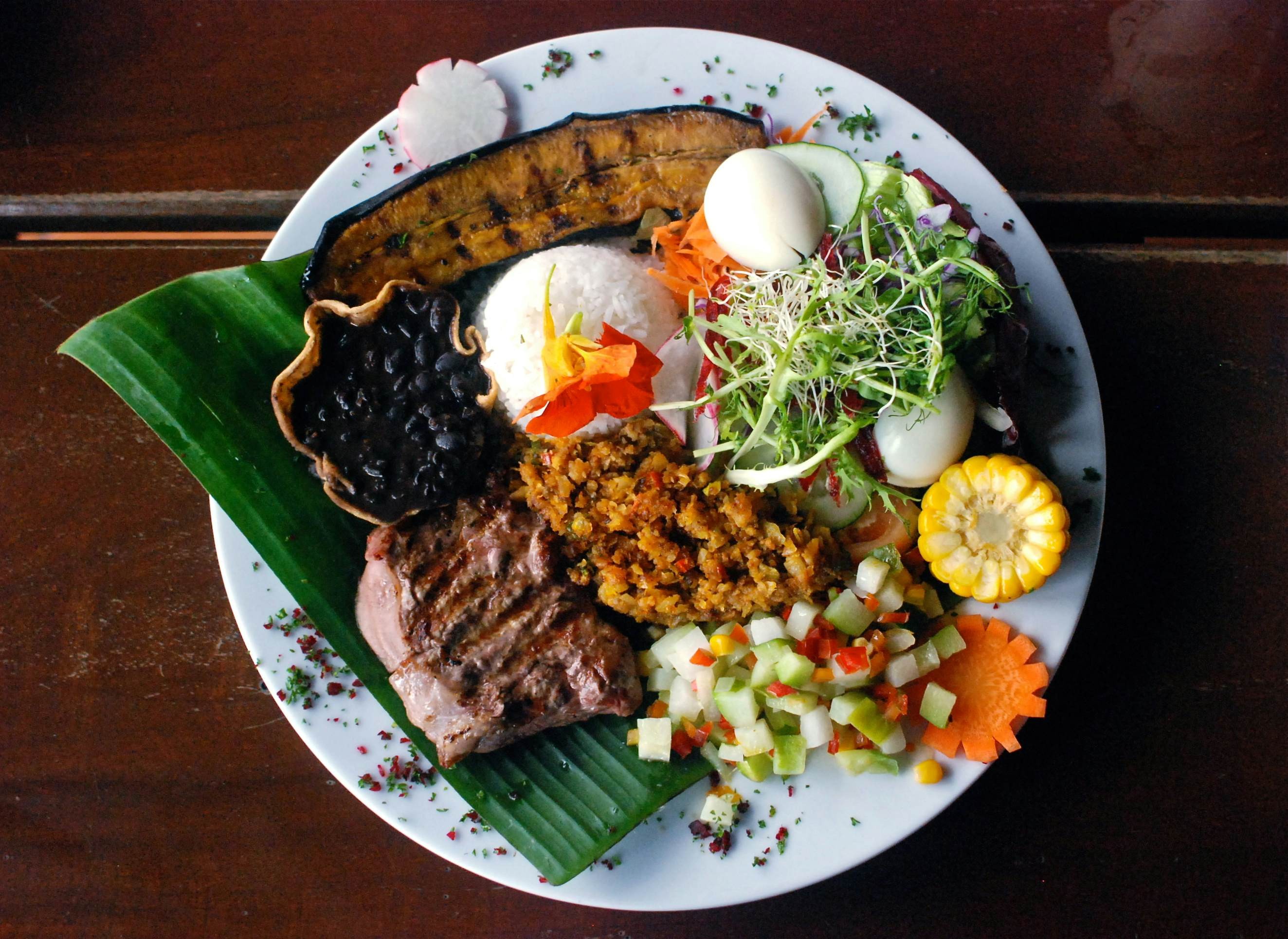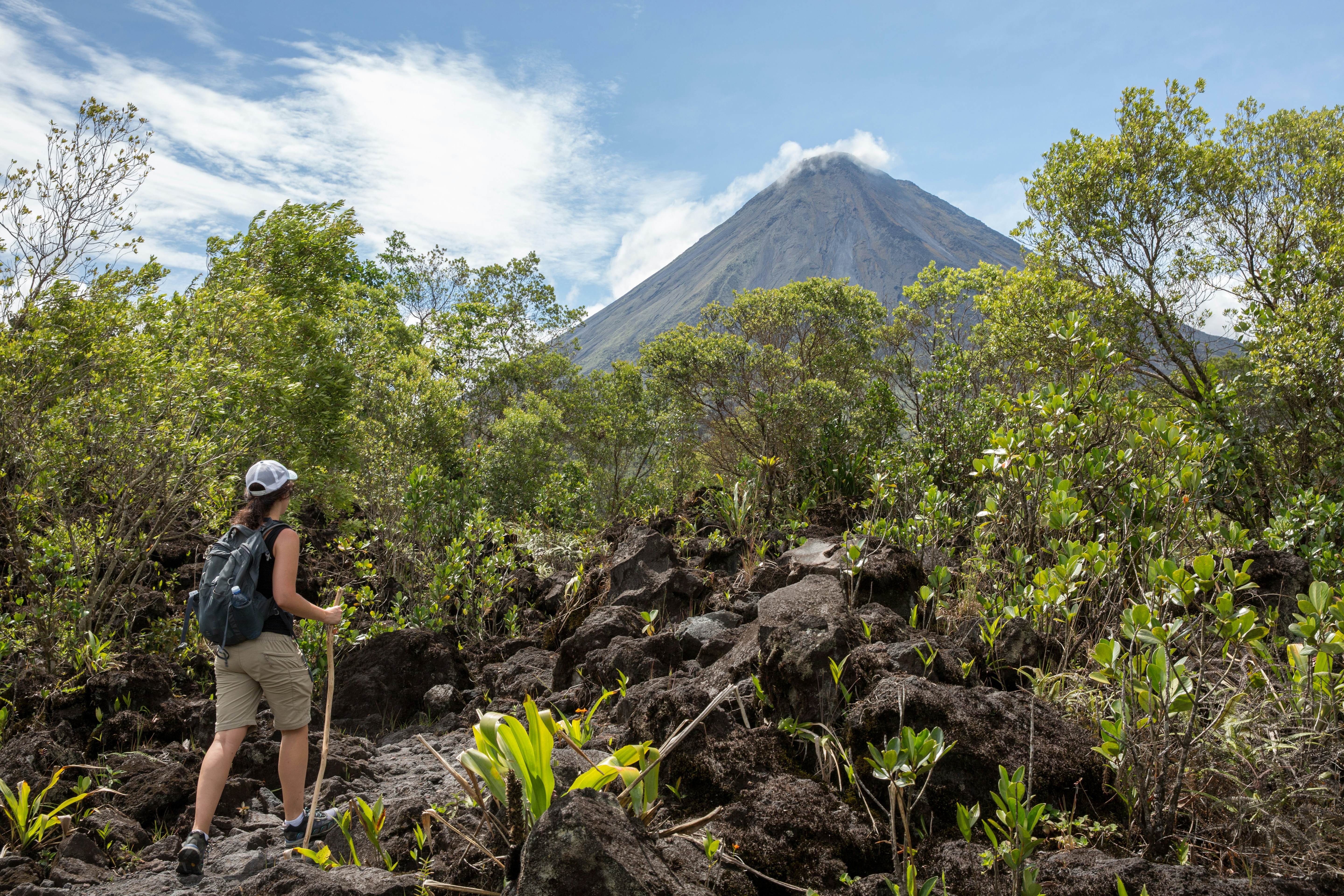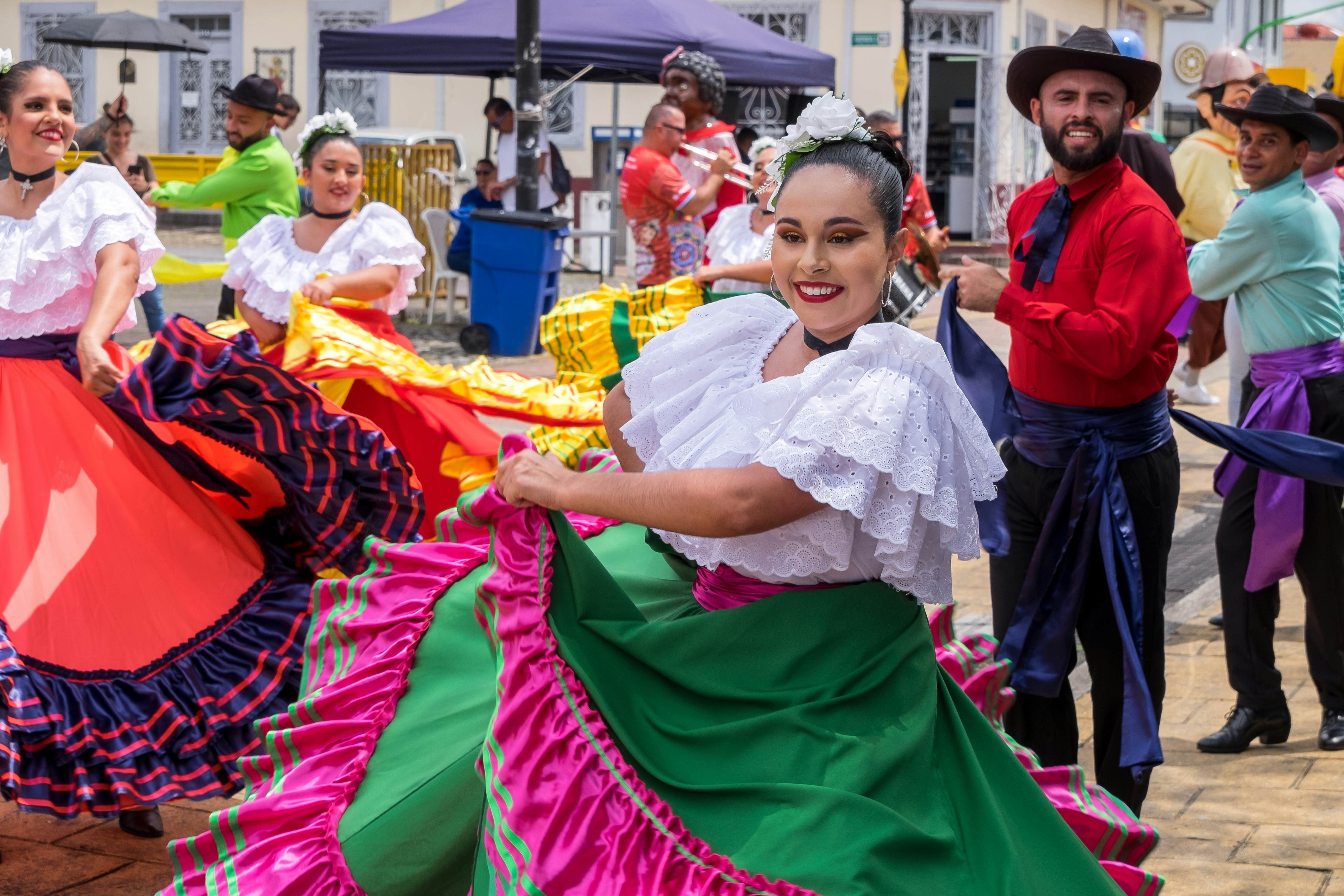What To Know Before Traveling To Costa Rica? Costa Rica, a vibrant paradise, offers thrilling adventures and stunning landscapes. With SIXT.VN, planning your trip is seamless, ensuring you experience the best of this beautiful destination. Explore these essential tips for an unforgettable trip, covering travel advice and essential preparations.
1. How Much Time Do I Need in Costa Rica?
One week in Costa Rica offers a satisfying taste of its wonders. You can enjoy shorter trips from the US, even a long weekend. If time is short, head to La Fortuna and the Arenal volcano, or the dense forests of Monteverde for memorable outdoor adventures. If you’re craving a beach break, fly into Liberia for access to Pacific Coast beaches, rather than San José. According to a study from the Costa Rica Tourism Board in 2023, most tourists spend an average of 10 days exploring the country’s diverse attractions.
Though Costa Rica appears small, travel times can be longer than expected. On the Pacific shore, combine surf and jungle adventures in as little as a week. If you have longer, explore the biodiverse Osa Peninsula or the wild beaches along the Caribbean coast.
2. What Should I Pack for Costa Rica’s Weather?
Costa Rica has two seasons, but packing for four is wise due to its microclimates. Officially, the dry season runs from December to March, the driest and hottest month, when the temperature hovers around 35°C (95°F). The rainy season runs from May through to November, with September and October being the wettest months.
Rainforest trails tend to be hot and steamy, but it can get chilly when you enter Costa Rica’s lofty cloud forests. Alongside T-shirts, shorts, and flip-flops, pack a raincoat and a fleece or warm jacket, waterproof hiking boots, closed-toe hiking sandals, a rash guard, and lightweight, quick-dry clothing.
Rain can arrive without warning, so bring a dry bag or other waterproof gear to protect your valuables. Don’t forget high-factor, water-resistant sunscreen and bug spray; both will be cheaper at home.
3. How Far in Advance Should I Plan My Trip?
Book your accommodation well in advance if you plan to visit Costa Rica at peak times such as Christmas, New Year, Easter, or the US spring break. Prices also rise during major festivals and events, and high-end restaurants and popular tours should be booked ahead of time. According to TripAdvisor data from 2022, booking accommodations and tours at least three months in advance can save up to 20% during peak seasons.
4. What’s the Best Way to Handle Money in Costa Rica?
The colón is Costa Rica’s official currency, but US dollars are widely accepted. Carry a mix of both, with a stash of small bills for tipping, taxis, small shops, and local restaurants. You can pay for everything else with credit and debit cards.
5. Is Tipping Customary in Costa Rica?
Tipping is optional in Costa Rica but a tip is much appreciated by hard-working guides and drivers. Aim for around 10% of the tour price, or more if the service is exceptional. Restaurants are required to add a 10% service tax to your bill as well as a 13% sales tax, but top it up if you feel your server went the extra mile.
 A plate of casado – the typical Costa Rican lunch of rice, beans, plantains and meat.Tipping is always appreciated in Costa Rica, especially for exceptional service.
A plate of casado – the typical Costa Rican lunch of rice, beans, plantains and meat.Tipping is always appreciated in Costa Rica, especially for exceptional service.
6. Do I Need to Know Spanish to Travel in Costa Rica?
English is widely spoken in Costa Rica, but a little Spanish goes a long way. Rolling out a few polite phrases will be met by big smiles from locals. Add the phrases buenos días (good morning), por favor (please) and gracias (thank you) to your lexicon. Another useful Ticos phrase is pura vida, which can be used to say everything from “hello” and “goodbye” to “what’s up?” or “that’s great.”
7. What Precautions Should I Take to Protect the Environment?
Costa Rica is famed for its dazzling biodiversity. This small Central American nation is home to an estimated 5% of the world’s plant and animal species, with around 28% of its landmass under protection. Locals take conservation seriously; Costa Rica generates 99% of its electricity from renewables and aims to be carbon neutral by 2050.
To play your part, choose lodgings with sustainable practices (look out for the Certification of Sustainable Tourism), travel with ethical tour guides, and eat local. Always keep your distance from wild animals – use a zoom lens or binoculars to see wildlife up close.
Costa Rica was the first country to launch a #stopanimalselfies campaign, so decline offers of photo opportunities with animals. And national parks have banned single-use plastics, so carry a reusable water bottle.
8. How Safe Is It to Travel in Costa Rica?
Costa Rica is generally safe, although petty crime does occur. Take the usual precautions and don’t flash expensive possessions. Avoid carrying all your credit cards together in one place, and if you need an ATM, try to use one inside a bank during the daytime. Foreign visitors are asked to carry their passports at all times, but the police will usually accept a photocopy.
Watch out for pickpockets in busy areas, such as bus stations and markets, and keep an eye on your belongings on buses and beaches. Steer clear of poorly lit streets and avoid wandering around dodgy neighborhoods alone after dark – seek local advice on spots to avoid. If you visit bars and clubs, don’t leave your drink unattended, as there have been reports of spiking. In case of emergency, call 911.
 Woman hiking the Arenal 1968 Trail, Costa Rica, in front of the Arenal volcanoExplore Costa Rica’s stunning landscapes safely and responsibly.
Woman hiking the Arenal 1968 Trail, Costa Rica, in front of the Arenal volcanoExplore Costa Rica’s stunning landscapes safely and responsibly.
9. Can I Climb Arenal Volcano?
Climbing the Arenal volcano is prohibited. Up until 2010, Volcán Arenal’s lava pyrotechnics thrilled onlookers. Now in a resting phase, its picture-perfect cone may look ready for climbing, but resist the temptation unless you’re a permit-carrying volcanologist – it’s illegal and could get you fined. Instead, you can crunch over its lava-covered lower slopes on a variety of hiking trails or get active in the surrounding national park. Make time for mountain biking, horseback riding, rappelling and ziplining, or kayaking and windsurfing on nearby Lake Arenal, then relax in the region’s natural hot springs.
10. What Health Precautions Should I Take?
Costa Rica’s healthcare system is ranked among the best in the world (according to the United Nations and the World Health Organisation), but you’ll have to pay for treatment, so it’s always wise to take out travel insurance with cover for medical care. Malaria is rare but local mosquitoes can carry other nasty diseases such as dengue and Zika, particularly in low-lying urban areas and along the coast.
The best way to avoid bug bites is to use insect repellent containing at least 20% DEET (diethyltoluamide), covering up bare skin, particularly in the evenings. According to the Centers for Disease Control and Prevention (CDC), using EPA-registered insect repellents is highly effective in preventing mosquito-borne diseases.
11. How Can I Stay Safe While Surfing?
Costa Rica is a great place to surf, with cool surf camps and year-round rollers along the Pacific Coast. Playa Hermosa on the Nicoya Peninsula was declared Central America’s first World Surfing Reserve in 2022. However, rip currents are common and you won’t always find lifeguards around, so look out for warning flags – a red flag indicates a danger zone, black means stay out of the water. Don’t swim or surf alone.
If a current starts to drag you out to sea, try to keep calm, shout for help, and swim parallel to the shore until you escape the current. And always check that rivers and lagoons are crocodile-free before diving in.
12. What Are the Road Conditions Like in Costa Rica?
Self-driving a hire car in Costa Rica offers the freedom to travel at your own pace, but there are a few things to consider. Most rental agencies require drivers to have comprehensive insurance in addition to purchasing mandatory liability insurance. A 4WD is a must if you’re planning to tackle dirt roads; always check the vehicle’s condition and ensure it has all the necessary safety equipment, including a functional spare tire.
On the road, drive slowly and defensively. In case of a breakdown, call the rental company or 911; it can be risky to accept unsolicited help from strangers. Never leave valuables unattended in your car, and try to use public parking lots with surveillance. Road trips always take longer than you think, so plan your journey ahead to avoid driving after dark.
13. Is the Tap Water Safe to Drink?
With Costa Rica’s heat and humidity, it’s important to stay hydrated, especially if you’re doing anything active. Tap water is normally safe to drink but if you’re going to remote rural areas or you’d rather not take the risk, save the environment (and some money) by investing in a water filter bottle such as the LifeStraw Go.
14. What is “Pura Vida” and How Should I Embrace It?
“Pura Vida” translates to “pure life,” but it’s more than just a saying; it’s a lifestyle in Costa Rica. Embrace it by slowing down, enjoying the simple things, and appreciating the natural beauty around you. Engage with locals, try new experiences, and let go of stress. Living the “Pura Vida” means finding joy in everyday moments and fostering a positive outlook. This philosophy is deeply rooted in the culture and is a key part of what makes traveling to Costa Rica so special.
15. What Types of Transportation are Available in Costa Rica and How Do I Choose the Best Option?
Costa Rica offers various transportation options to suit different needs and budgets:
-
Rental Cars: Ideal for exploring at your own pace, especially in rural areas. A 4×4 vehicle is recommended for rough terrains.
-
Buses: The most affordable option for traveling between cities and towns. They are frequent but can be crowded.
-
Shuttles: Private or shared shuttles provide door-to-door service, offering convenience and comfort.
-
Taxis: Available in urban areas and tourist hotspots. Always ensure the meter is running or agree on a fare beforehand.
-
Domestic Flights: Useful for long distances, saving time when traveling between regions.
Choosing the best option depends on your itinerary, budget, and comfort preferences. Renting a car offers flexibility, while buses are budget-friendly. Shuttles provide a balance of convenience and cost, and domestic flights are ideal for covering large distances quickly.
16. What are Some Popular Ecotourism Activities in Costa Rica and How Can I Participate Responsibly?
Costa Rica is a hub for ecotourism, offering numerous activities that allow you to connect with nature responsibly:
-
Hiking in National Parks: Explore diverse ecosystems while respecting wildlife and park regulations.
-
Ziplining: Experience the rainforest canopy while supporting sustainable tourism operators.
-
Wildlife Watching: Observe animals in their natural habitat with certified guides who prioritize conservation.
-
Birdwatching: Discover Costa Rica’s rich avian biodiversity while minimizing disturbance to bird habitats.
-
Visiting Sustainable Farms: Learn about organic farming practices and support local communities.
Participate responsibly by choosing certified tour operators, respecting wildlife, reducing waste, and supporting local communities. This ensures your travel contributes positively to Costa Rica’s environment and economy.
17. What Are Some Unique Cultural Experiences I Should Seek Out in Costa Rica?
To enrich your trip with unique cultural experiences, consider:
-
Visiting Local Markets: Engage with artisans and sample traditional foods.
-
Participating in Festivals: Experience vibrant celebrations like Día de los Muertos or local patron saint festivities.
-
Learning Traditional Crafts: Take a workshop in pottery, weaving, or wood carving.
-
Exploring Indigenous Communities: Visit reserves like Bribri or Boruca to learn about their history and customs.
-
Enjoying Costa Rican Cuisine: Savor local dishes like gallo pinto, casado, and fresh ceviche.
These experiences offer insights into Costa Rica’s rich heritage and provide meaningful interactions with its people, enhancing your understanding and appreciation of the local culture.
18. What Are Some Common Scams to Be Aware Of in Costa Rica?
While Costa Rica is generally safe, being aware of potential scams can help ensure a smooth trip:
-
Fake Tourist Information: Avoid unofficial tourist information centers that may overcharge or mislead you.
-
Taxi Overcharges: Ensure taxi meters are running or agree on a fare beforehand.
-
Parking Scams: Use official parking lots and avoid individuals offering unsolicited parking assistance.
-
ATM Skimming: Use ATMs inside banks and check for any suspicious devices attached to the machine.
-
Fake Police Officers: Request to see identification if approached by someone claiming to be a police officer.
Staying informed and cautious can help you avoid these scams and ensure a safe and enjoyable travel experience in Costa Rica.
19. What Are Some Must-Try Foods and Drinks in Costa Rica?
Costa Rican cuisine offers a delightful mix of flavors that you shouldn’t miss:
- Gallo Pinto: A traditional breakfast dish of rice and beans, often served with eggs, cheese, or plantains.
- Casado: A hearty lunch plate with rice, beans, plantains, salad, and a choice of meat, chicken, or fish.
- Ceviche: Fresh seafood marinated in lime juice, cilantro, and onions.
- Olla de Carne: A flavorful beef stew with vegetables like potatoes, carrots, and yucca.
- Café Chorreado: Traditional Costa Rican coffee made using a cloth filter.
- Agua Dulce: A sweet drink made from sugarcane, often served hot.
These culinary delights provide a taste of Costa Rica’s rich culinary heritage and are essential for a complete travel experience.
20. How Can SIXT.VN Enhance My Travel Experience in Costa Rica?
SIXT.VN can significantly enhance your travel experience in Costa Rica by offering:
-
Reliable Transportation: SIXT.VN provides a range of vehicles to suit your travel needs, ensuring you have reliable transportation throughout your trip.
-
Convenient Airport Transfers: SIXT.VN offers convenient airport transfer services, ensuring a smooth and stress-free arrival and departure.
-
Accommodation Assistance: SIXT.VN helps you find the perfect accommodation, offering a variety of options to suit your budget and preferences.
-
Tour Bookings: SIXT.VN can assist you in booking tours and activities, ensuring you experience the best of Costa Rica’s attractions.
-
Local Expertise: SIXT.VN provides valuable local insights and travel tips, helping you make the most of your trip.
By choosing SIXT.VN, you can enjoy a seamless and memorable travel experience in Costa Rica, with all your essential needs taken care of.
 Folk group parading through the urban center of San Jose, Costa Rica.Planning ahead is key for a stress-free Costa Rican vacation, especially during peak seasons.
Folk group parading through the urban center of San Jose, Costa Rica.Planning ahead is key for a stress-free Costa Rican vacation, especially during peak seasons.
Maximize Your Costa Rican Adventure with SIXT.VN
Don’t let planning challenges hold you back from experiencing the wonders of Costa Rica. SIXT.VN offers tailored travel advice, reliable airport transfers, a wide selection of hotels, curated tour bookings, and flight arrangements.
Ready to explore the beauty and adventure that await? Contact SIXT.VN today via Hotline/WhatsApp: +84 986 244 358 or visit SIXT.VN for personalized travel planning that ensures a smooth and unforgettable trip to Costa Rica.
FAQ: Traveling to Costa Rica
- Is Costa Rica expensive to visit?
- Costa Rica can be moderately expensive, but costs can be managed by choosing local accommodations and dining options.
- What is the best time of year to visit Costa Rica?
- The dry season (December to April) is ideal for sunny weather, but the rainy season offers lush landscapes and fewer crowds.
- Do I need a visa to enter Costa Rica?
- Many nationalities can enter Costa Rica without a visa for up to 90 days. Check the latest visa requirements based on your citizenship.
- What should I wear in Costa Rica?
- Pack lightweight, breathable clothing, swimwear, and comfortable hiking shoes.
- Are there any cultural norms I should be aware of?
- Respect local customs, be punctual, and greet people with a handshake.
- What is the currency in Costa Rica?
- The currency is the Costa Rican Colón (CRC), but US dollars are widely accepted.
- How do I get around in Costa Rica?
- Options include rental cars, buses, shuttles, and domestic flights.
- Are credit cards widely accepted in Costa Rica?
- Yes, credit cards are accepted in most establishments, but it’s wise to carry some cash for smaller businesses.
- What is the emergency number in Costa Rica?
- The emergency number is 911.
- Is it safe to drink tap water in Costa Rica?
- Tap water is generally safe, but using a water filter bottle is recommended in rural areas.



